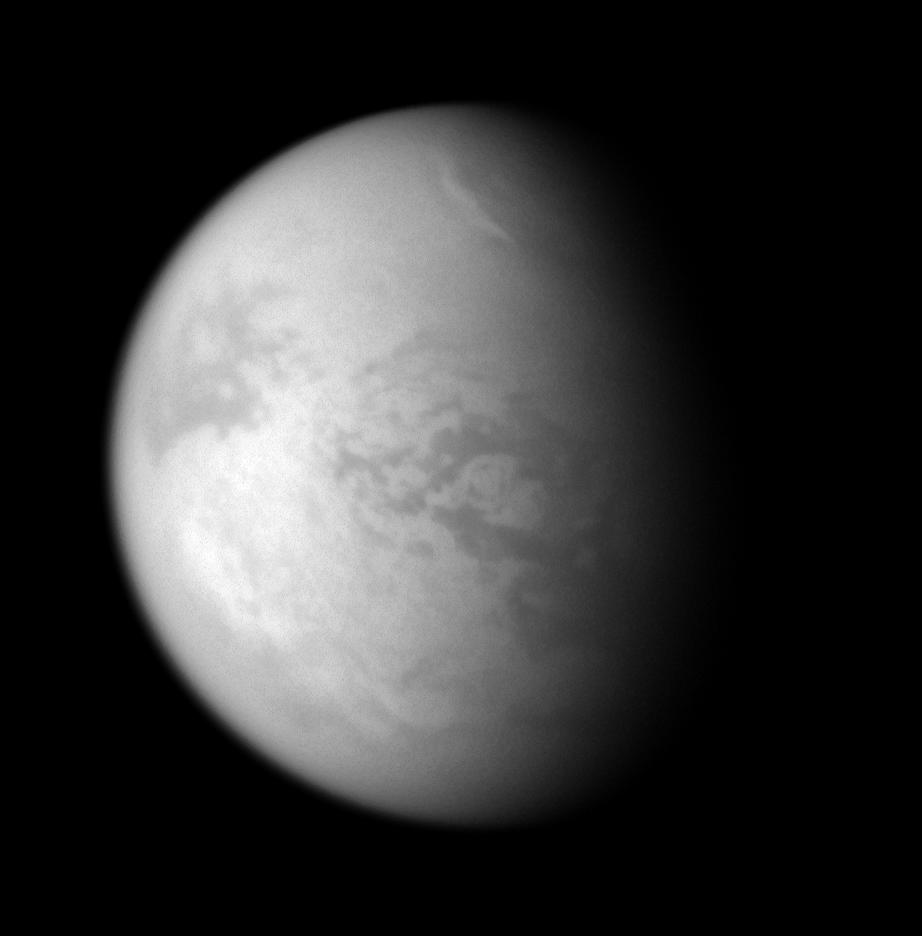Alien Weather

| PIA Number | PIA09846 |
|---|---|
| Language |
|
A bright streak of cloud graces the northern skies of Titan.
This is the second time the Cassini spacecraft's imaging cameras have spotted clouds at 60 degrees north latitude on Titan -- the previous occasion being the Feb. 2007 observations during which the cameras saw the dark, hydrocarbon lakes that cover much of the north.
That cloud feature is visible at the bottom of the still image in Exploring the Wetlands of Titan
.
The circular, 400-kilometer wide impact feature Menrva can be seen near center.
North on Titan (5,150 kilometers, or 3,200 miles across) is up and rotated 26 degrees to the right.
The image was taken with the Cassini spacecraft narrow-angle camera on Jan. 20, 2008 using a combination of spectral filters sensitive to wavelengths of polarized infrared light centered at 938 and 746 nanometers. The view was acquired at a distance of approximately 1.3 million kilometers (800,000 miles) from Titan and at a Sun-Titan-spacecraft, or phase, angle of 58 degrees. Image scale is 8 kilometers (5 miles) per pixel. Due to scattering of light by Titan's hazy atmosphere, the sizes of surface features that can be resolved are a few times larger than the actual pixel scale.
The Cassini-Huygens mission is a cooperative project of NASA, the European Space Agency and the Italian Space Agency. The Jet Propulsion Laboratory, a division of the California Institute of Technology in Pasadena, manages the mission for NASA's Science Mission Directorate, Washington, D.C. The Cassini orbiter and its two onboard cameras were designed, developed and assembled at JPL. The imaging operations center is based at the Space Science Institute in Boulder, Colo.
For more information about the Cassini-Huygens mission visit http://saturn.jpl.nasa.gov . The Cassini imaging team homepage is at http://ciclops.org .
Credit: NASA/JPL/Space Science Institute
